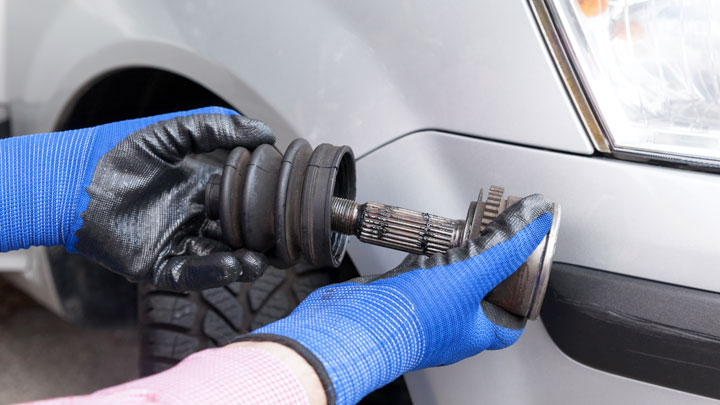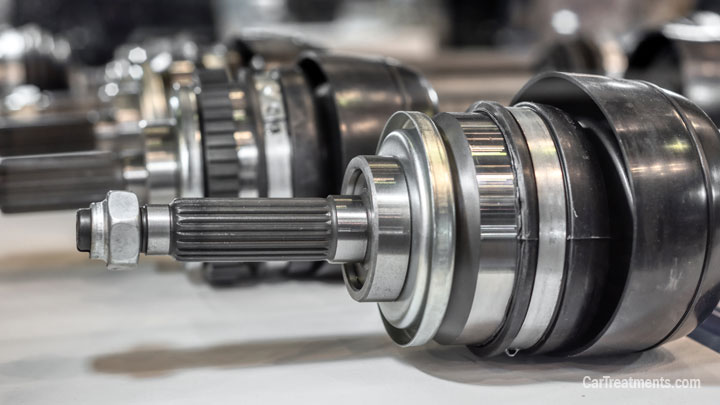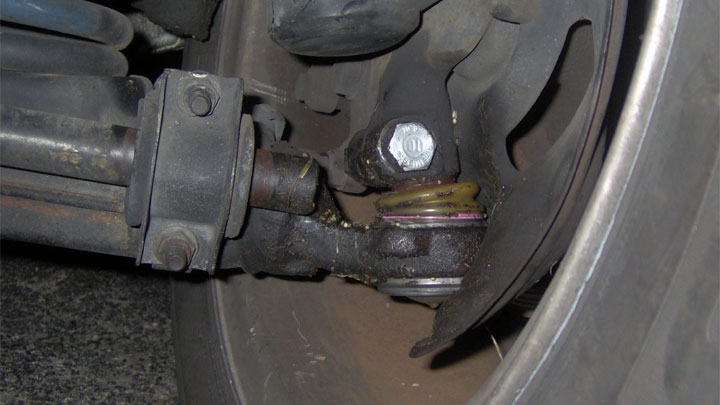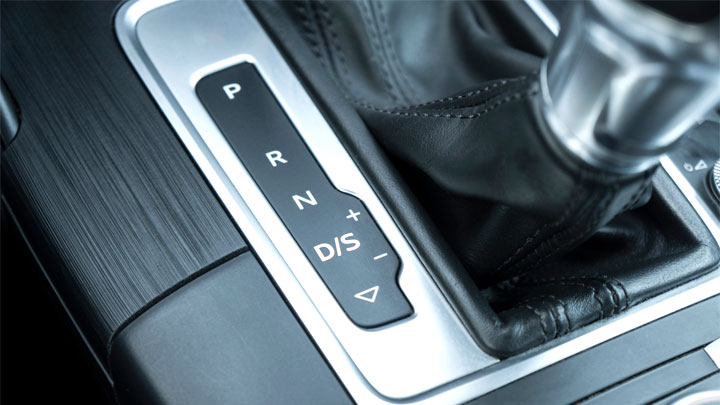Last Updated on July 21, 2022
The function of constant-velocity joints, or CV joints, in a vehicle is to let power be transferred to the wheels from the transmission.
Power is transmitted at a consistent speed of rotation while there is not much friction. This is why when you have a problem with a CV joint, you’ll likely experience shaking when accelerating.
You will find CV joints in virtually all front-wheel drive vehicles and most newer rear-wheel drive vehicles which have a separate rear suspension. The half-shafts’ end of their rear axles will have CV joints in them.
Types of CV Joints
Here are the six most common types of CV joints used in vehicles today along with how they work.
Related: Common Symptoms of a Bad CV Joint
#1 – Rzeppa CV Joint

The “Rzeppa” outer CV joint is the most common joint type. An engineer by the name of Alfred H. Rzeppa invented this joint in the year 1926 an consequently came up with an improved design a decade later.
The design of this joint enabled the transmission of power through 6 spheres which were positioned between the outer race and inner race. These spherical balls are secured in their location with the help of small windows inside of a cage assembly. This assembly is what goes between the outer race and inner race.
The joint is designed so the balls cut the operating angle in half. The way it works is similar to a bevel gear.
The difference is that the torque isn’t transmitted across the joint by the gear’s teeth. Instead, in the outer housing and inner housing, the spherical balls move forward against each of their tracks.
Read Also: 4 Worn Ball Joint Symptoms
#2 – Fixed and Plunge Joints
A plunge joint is an inboard joint within front-wheel drive applications. A fixed joint is an outboard joint. A plunge joint is not needed for these two if at least one of the joints can do the job properly.
Also, it is crucial that the outer joint can tolerate bigger operating angles which are necessary for the steering.
With rear-wheel drive applications that have an independent rear suspension, you can fix one joint per axle shaft. There are less than perfect operating angels because you don’t use the wheels for steering. As a result, you can use plunge joints one end of the axle shafts or both ends.
#3 – Plunge Joints (Tripod & Ball-Type)
These types of joints have either a tripod or central drive. The tripod, or spider, contains 3 trunnions which have needle bearings with spherical rollers. They also have an outer housing; or tulip.
The joints on some tripods have a closed outer housing, causing the roller tracks to be completely inside of it. There are also joints which have an open tulip and an outer housing which had their roller tracks machined out.
The most common use for tripod joints is as front-wheel drive inner plunge joints.
Ball-type joints that are plunging come in 2 styles. There is the cross groove joint and the double-offset. The former has an outer housing that is doughnut shaped and flat with angled grooves, while the latter has an outer housing that is cylindrical and contains straight grooves.
#4 – Tripod Joints
The interior end of drive shafts has a tripod joint. This allows power to be transmitted, regardless of whether there is angle shifting.
The features of the tripod joint include a 3-legged spider with mounted on barrel-like rollers. These go into a cup which has 3 matching grooves that are connected to a differential.
These barrel-like rollers have a 120° mount to each other and have the ability to slide forward and backward on its tracks within the tulip.
See Also: 4 Symptoms of a Faulty Slip Yoke
#5 – Tripod Joints (Fixed)
Front-wheel drive applications will sometimes use a fixed tripod joint as the outer joint. The outer housing has the trunnion mounted onto it.
Then, the input shaft has an open tulip in which 3 roller bearings will turn against. The joint is held together by a steel spider that locks it.
#6 – Inboard Joints and Outboard Joints
In the drivetrains of FWD vehicles, every half shaft has 2 CV joints. The inner joint is the one closest to the transaxle and the outer joint is the one closest to the wheel.
In RWD vehicles which have independent rear suspension, the inboard joint is the one closest to the differential, while the outboard joint is the one near the wheel.



